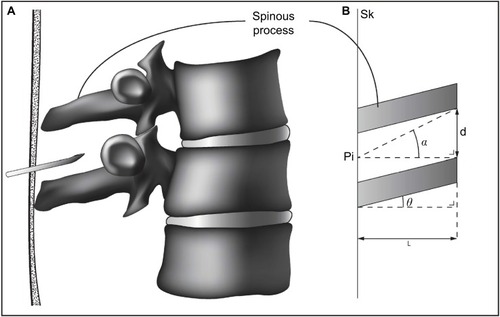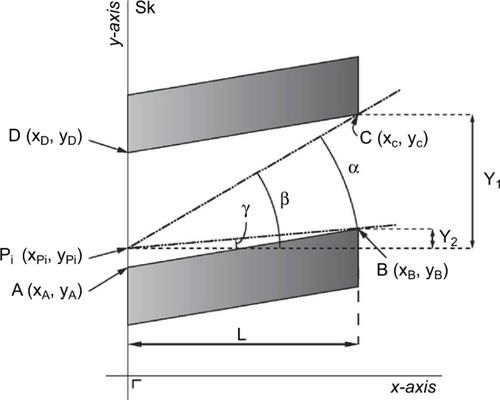Figures & data
Figure 1 The adopted geometrical model: two adjacent spinous processes represented by two parallelograms.

Figure 2 Two adjacent spinous processes are depicted (shaded areas).

Figure 3 Four sets of two adjacent spinous processes and their corresponding plots are depicted.

